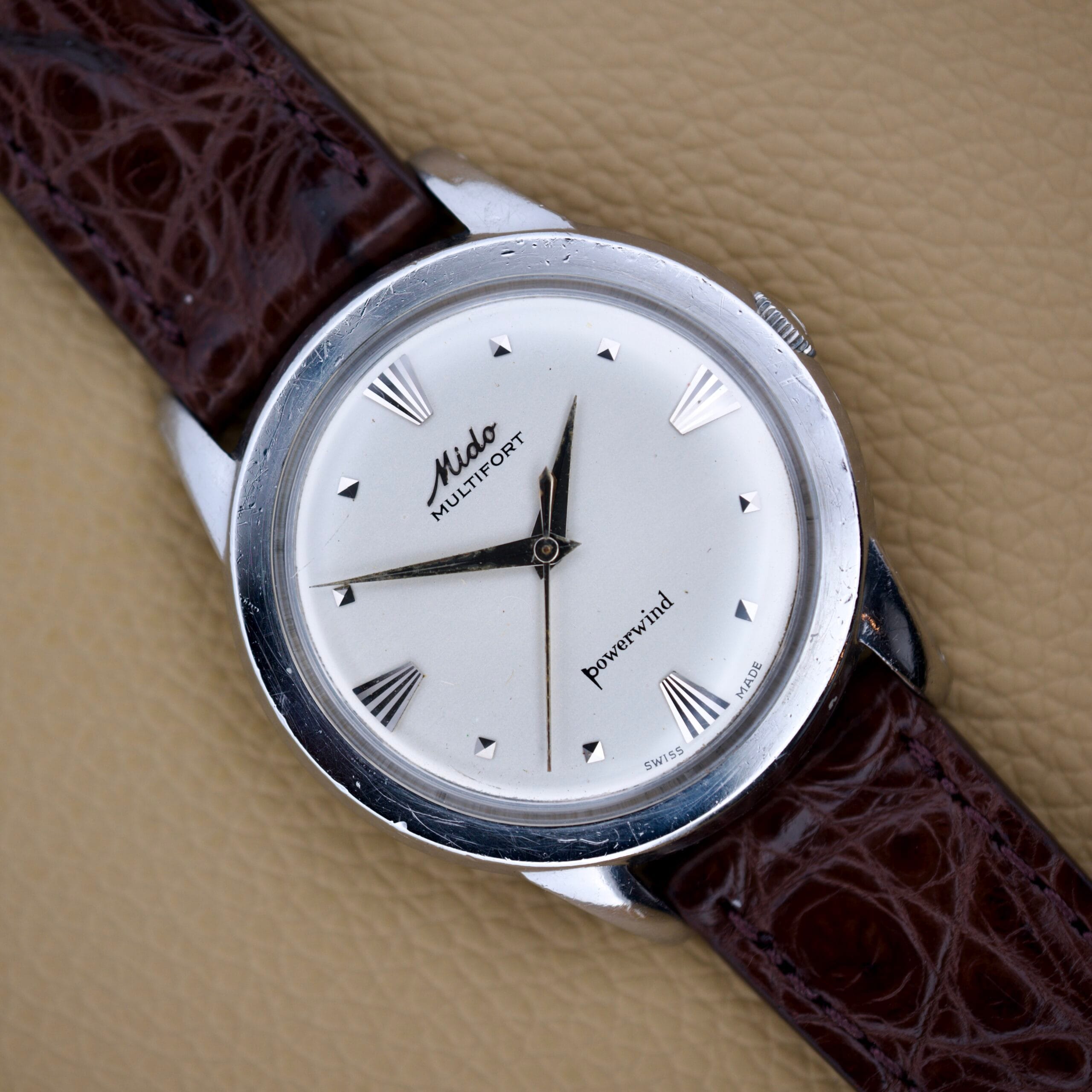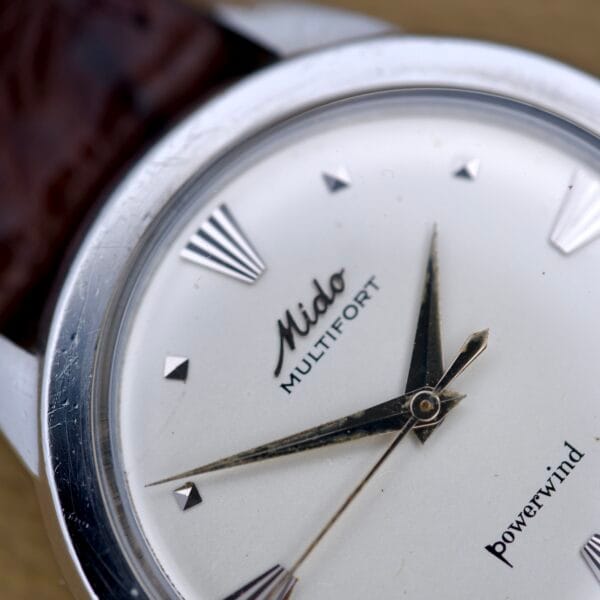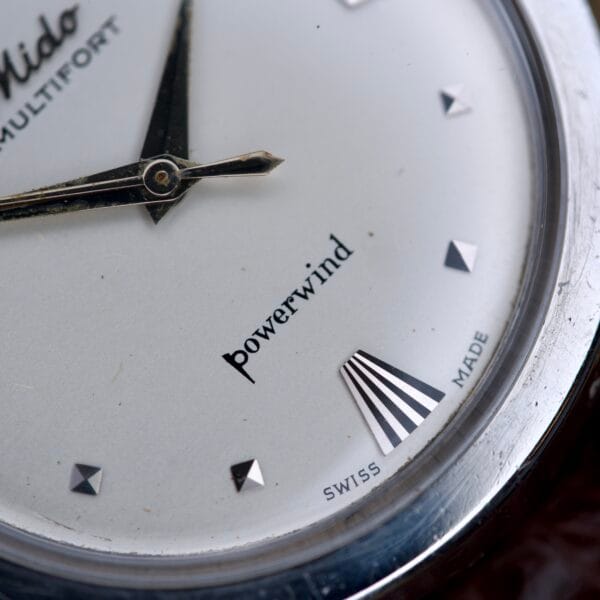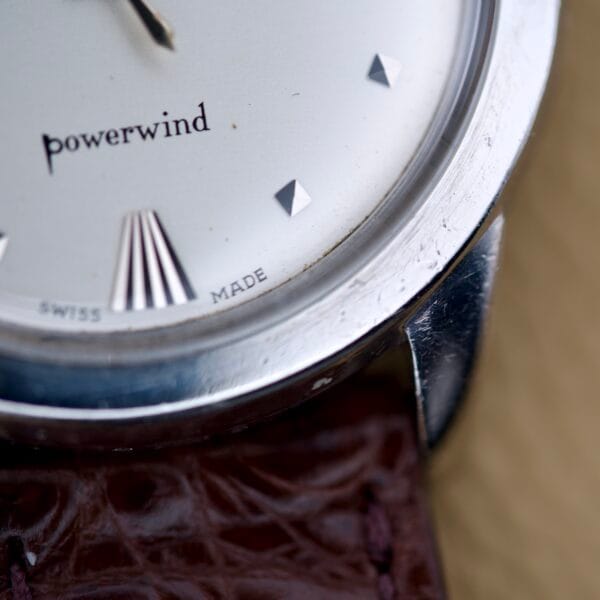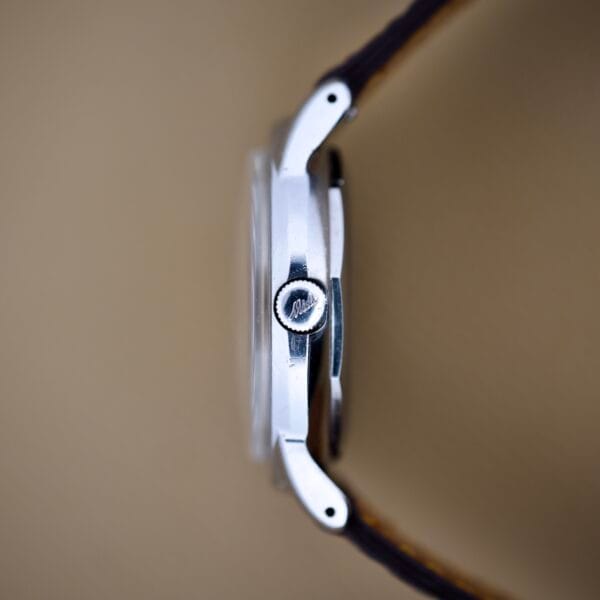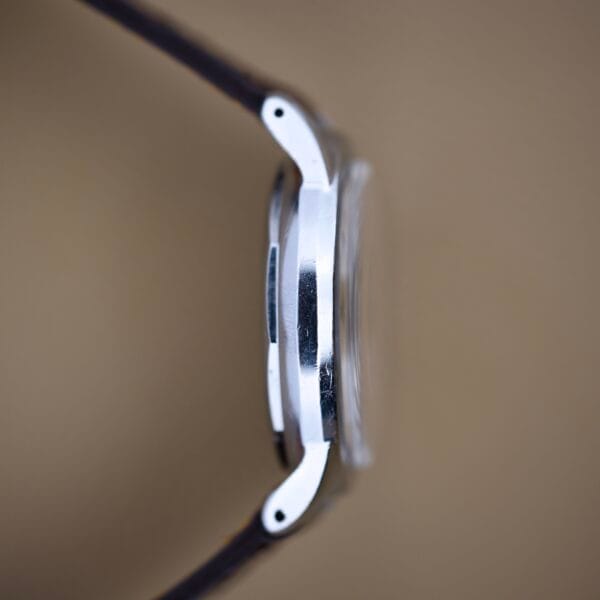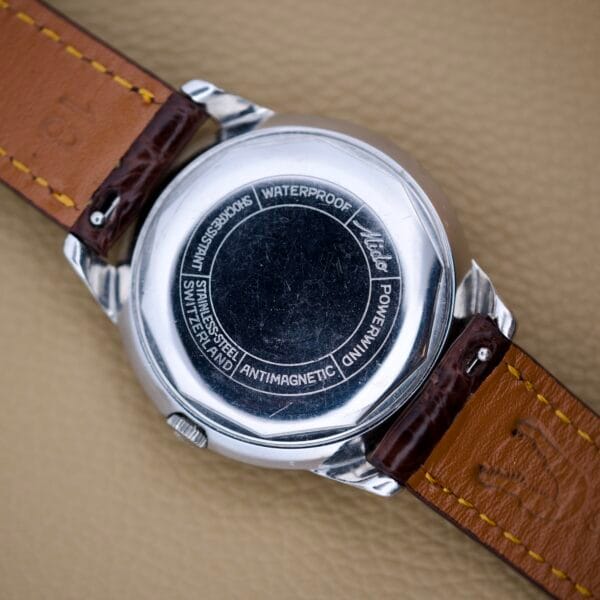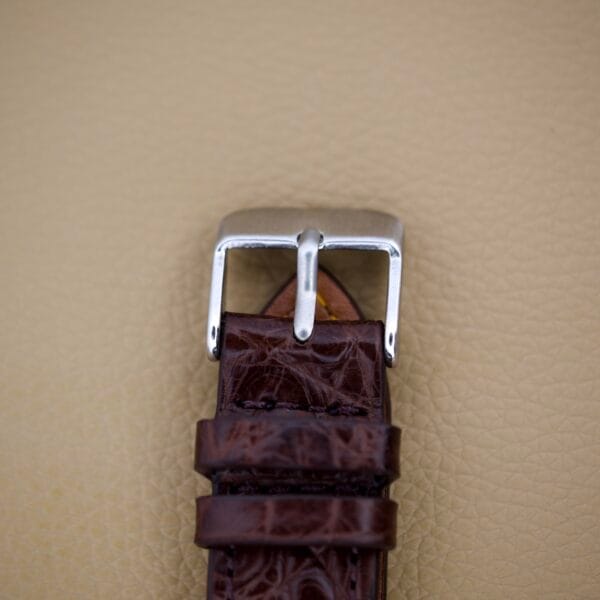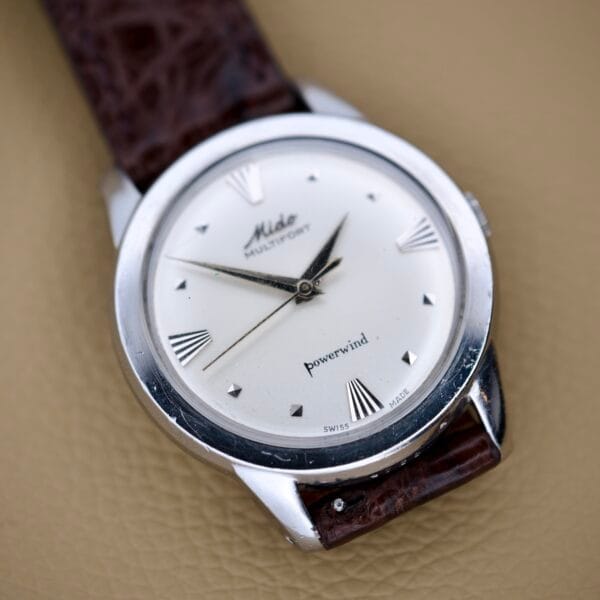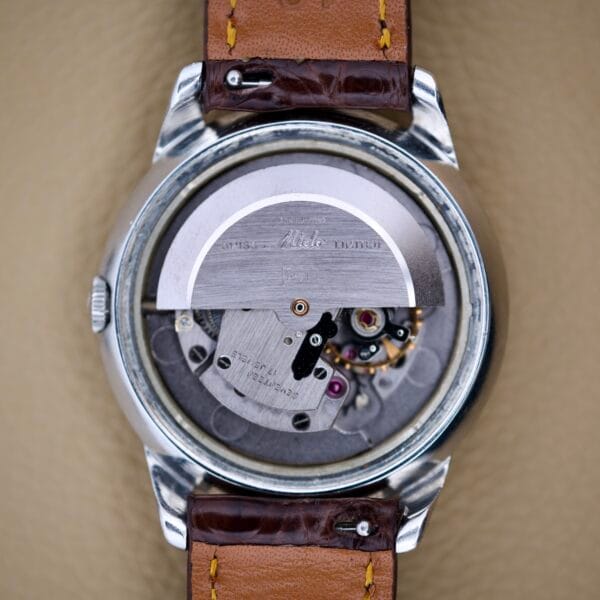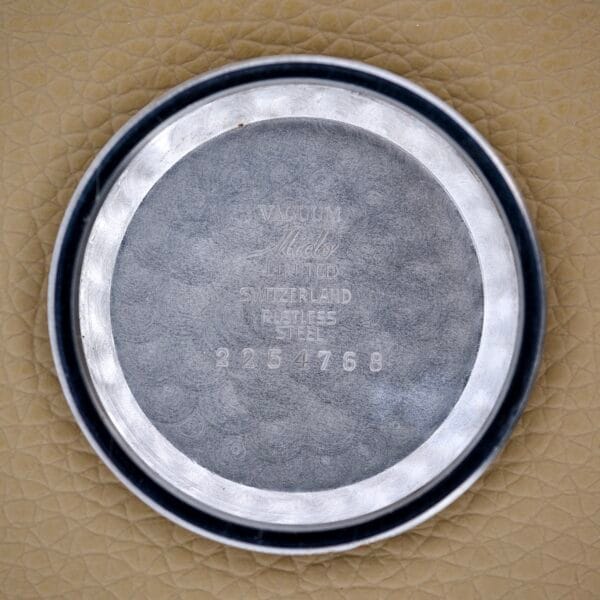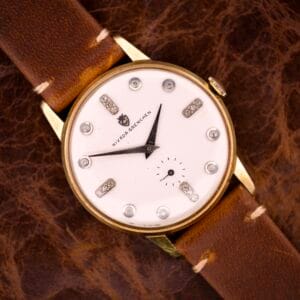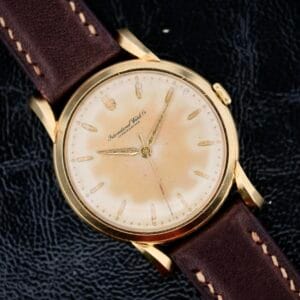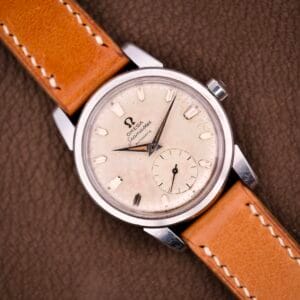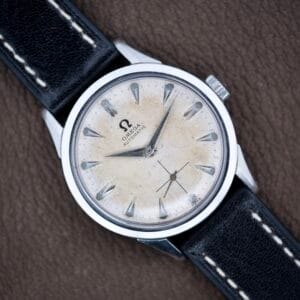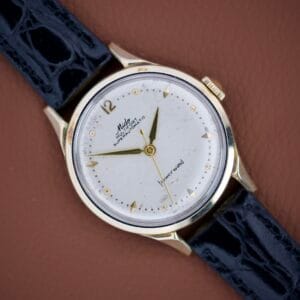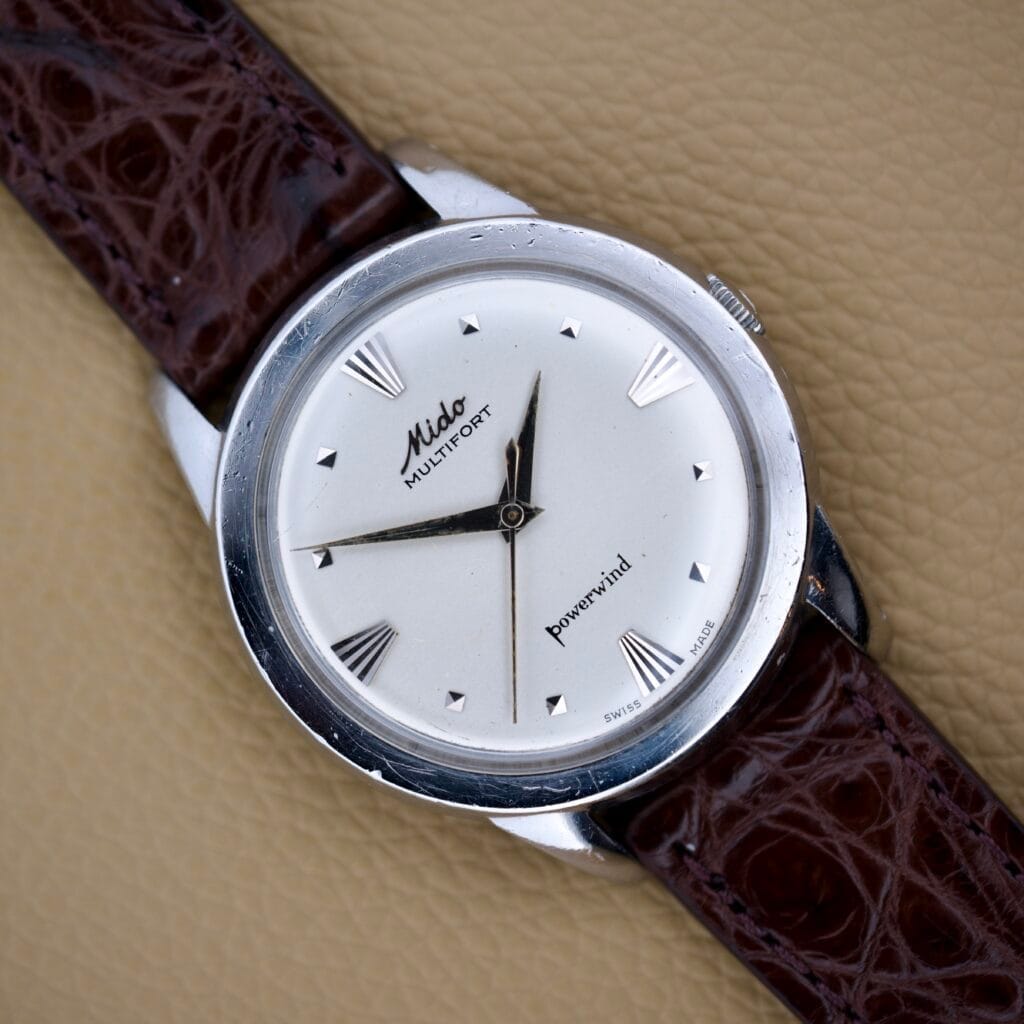Don't miss the next drop
There are certain watches that just perfectly encapsulate the design ethos of their era. This Mido Multifort Powerwind is one of them. It’s a stunning example of late-1950s/early-1960s design, blending robust, innovative technology with an incredibly stylish and distinctive aesthetic. For any enthusiast of mid-century watchmaking, this piece is an absolute knockout.
Mido’s history is one of relentless innovation. The Multifort line, introduced in 1934, was already legendary for its pioneering combination of automatic winding, water resistance, and shock resistance. But the introduction of the “Powerwind” system in 1954 was a game-changer, creating what was then the world’s most efficient self-winding mechanism. This watch is a proud descendant of that legacy, powered by the Caliber 917P, a fantastic 17-jewel automatic movement known for its simplicity and rugged reliability. Furthermore, this example features a “Vacuum” case back, a monocoque (one-piece) case design patented by Mido that was accessible only through the crystal, significantly enhancing its water resistance.
This particular Multifort is a true feast for the eyes. Its 34mm stainless steel case is classic and beautifully proportioned, with sharp, elegant lugs that give it a timeless profile. But it’s the dial that truly sings. The clean, silvery-white surface provides the perfect canvas for a set of stunning and unusual hour markers. The cardinal points at 12, 3, 6, and 9 are marked with fantastic, fan-shaped applied indices with black engraved lines, a beautiful Art Deco-inspired flourish. These are complemented by faceted pyramid markers for the intervening hours, creating a look that is both sophisticated and wonderfully unique. The sharp, original dauphine handset completes the perfectly balanced and legible design.
The condition of this watch is, in a word, exceptional. It’s a true “time capsule” piece that has been remarkably preserved. The dial is incredibly clean, with its intricate markers and crisp printing fully intact. The stainless steel case is sharp and appears unpolished, retaining its original factory lines and showing only the most minimal signs of its age. Critically, it retains its original and correct signed Mido crown, a detail so often lost to time.

